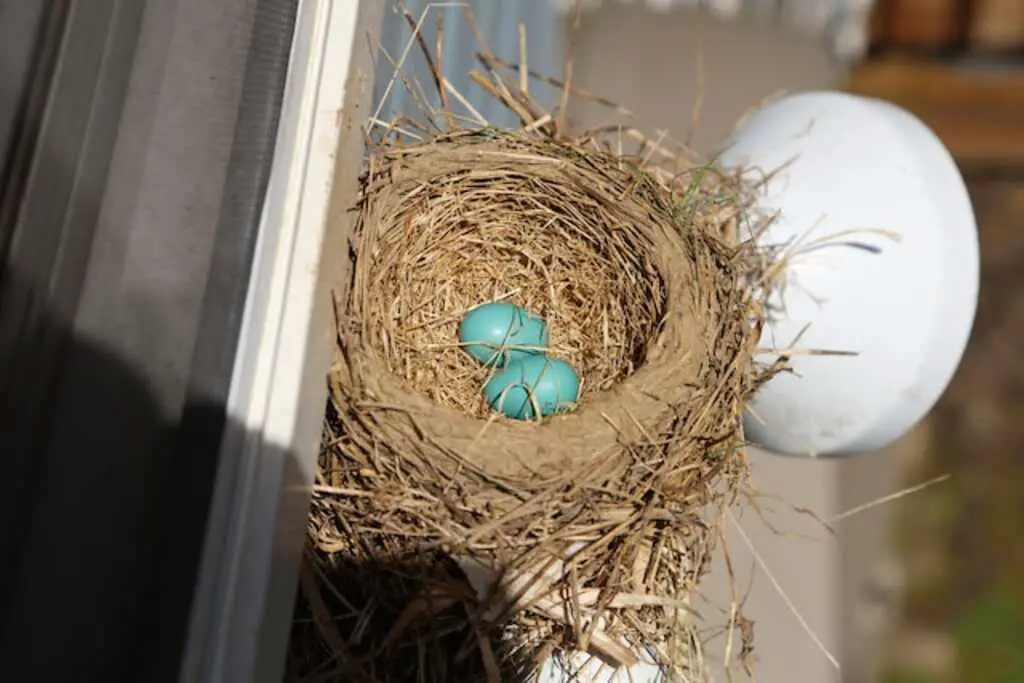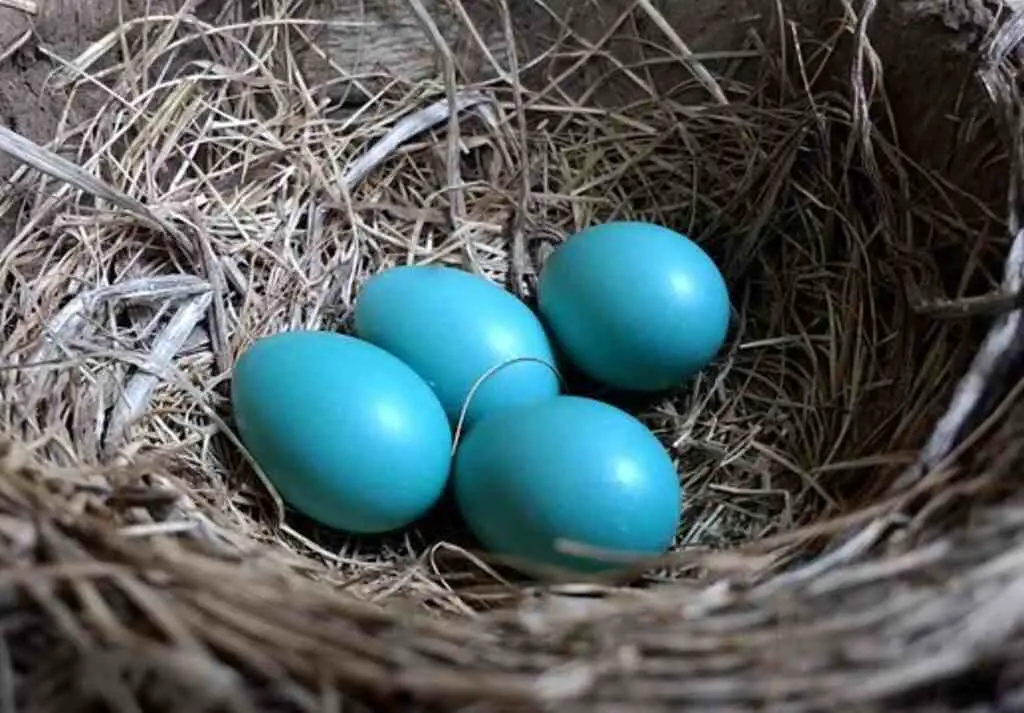Get ready to break free from the ordinary! When you think of eggs, white or brown may come to mind, but there’s an egg-citing color that steals the show – blue!
In this article, we’ll dive into the captivating science behind blue eggshell coloration and the fascinating genetics that make it happen.
Get ready to unlock the secrets of “How Do Blue Eggs Get Their Color?” It’s a shell of a tale you won’t want to miss!
Table of Contents
- 1 Explanation of the Topic
- 2 Importance of Understanding How Blue Eggs Get Their Color
- 3 Brief History of Blue Egg-Laying Chickens
- 4 The Science Behind Egg Coloration
- 5 Blue Eggs and Their Unique Coloration
- 6 The Genetics Behind Blue Egg-Laying Chickens
- 7 How to Breed Blue Egg-Laying Chickens
- 8 Conclusion
- 9 FAQs: How Do Blue Eggs Get Their Color?
- 9.1 How are blue eggs different from white or brown eggs?
- 9.2 Are blue eggs safe to eat?
- 9.3 What causes the blue color in blue eggs?
- 9.4 Can all chickens lay blue eggs?
- 9.5 Are blue eggs nutritionally different from other eggs?
- 9.6 Can blue egg-laying chickens produce eggs of other colors?
- 9.7 Do blue eggs have a different taste compared to white or brown eggs?
- 9.8 Are blue eggs more expensive than other eggs?
- 9.9 Can the blue color of the eggs fade over time?
- 9.10 What can influence the intensity of blue color in blue eggs?
- 10 Author
Explanation of the Topic
The color of an eggshell is determined by pigments that are deposited on its surface during formation in the hen’s reproductive system.
These pigments are synthesized within cells known as glandular cells, which line certain regions of the chicken’s reproductive tract.
There are three primary types of pigment responsible for egg coloration: biliverdin, protoporphyrin IX, and oocyanin.
While most people associate blue with being a cool or calming color, it actually requires a combination of different pigments to create this unique shade in eggshells.
The presence of a specific pigment known as oocyanin contributes to the blue hue found in some chicken breeds’ eggs.
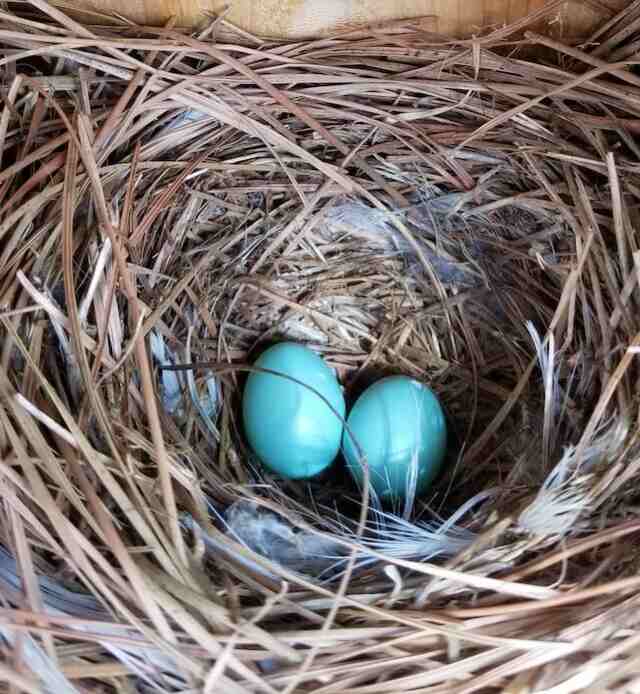
Importance of Understanding How Blue Eggs Get Their Color
Understanding how chickens lay blue eggs is not only interesting, but also has practical implications for farmers and backyard chicken keepers looking to breed specific breeds that produce colored eggs.
Additionally, consumers can benefit from understanding which breed lays which colored egg, so they can choose what they want when shopping for farm-fresh eggs.
Additionally, researchers have found that certain compounds found in naturally colored foods (such as fruits and vegetables) can contribute to better health outcomes than consuming artificially colored food products.
Therefore, studying naturally occurring colors in food can be beneficial for the health and nutrition industry as well.
Brief History of Blue Egg-Laying Chickens
Blue egg-laying chickens have been around for a long time, with some of the earliest known breeds dating back to the Chinese Han Dynasty (206 BC – 220 AD).
Some of these ancient breeds have since been lost over time, but others have evolved into modern-day breeds such as Araucanas and Ameraucanas.
In North America, blue eggs gained popularity during World War II when food rationing caused a decrease in egg production.
People began keeping chickens for their eggs, and soon discovered that certain breeds lay colored eggs, including blue.
Today, the demand for naturally colored eggs continues to grow, with blue being one of the most sought-after colors.

The Science Behind Egg Coloration
Pigments Responsible for Egg Coloration
Egg coloration is determined by the presence of pigments. The three pigments that are primarily responsible for the vast majority of eggshell colors are biliverdin, protoporphyrin IX, and oocyanin.
These pigments are synthesized and deposited on the eggshell during egg formation in the shell gland. Each pigment has unique chemical properties that create different shades and hues when combined in various ways.
Biliverdin
Biliverdin is a green pigment that is derived from hemoglobin, a protein found in red blood cells. When red blood cells break down, biliverdin is produced as one of the byproducts.
Biliverdin can also be produced from other sources like chlorophyll or bile pigments. In chickens, biliverdin is deposited on the surface of brown eggs to give them their characteristic brown coloration.
Protoporphyrin IX
Protoporphyrin IX is a reddish-brown pigment that is synthesized from amino acids within certain cells of birds’ bodies.
The pigment can be found in small amounts in most bird eggs but becomes especially prominent in speckled or dark-colored eggs like those laid by quails or some chicken breeds like Marans or Welsummers.
Oocyanin
Oocyanin is a blue-green pigment that gives blue eggs their unique coloration. It’s an exclusive pigment to blue eggs and only found within a small number of birds including Araucanas, Ameraucanas and some Easter Eggers (a mixed breed).
How Pigments Are Deposited on the Eggshell
The process for depositing pigments on eggshells occurs during formation when the shell is still soft.
The shell gland of the hen’s reproductive tract secretes a layer of mineralized calcium carbonate, which surrounds and hardens around the egg.
At the same time, the shell gland also deposits pigments onto the outer surface of the eggshell.
Shell Gland Function
The shell gland is responsible for producing the bulk of calcium carbonate used to create an eggshell. It also plays a role in depositing pigments onto that shell.
The pigment deposition occurs in a two-stage process:
First, pigment precursors are transported to and stored within specialized vesicles within cells lining of the oviduct where they can be modified or further developed during transport through different parts of this reproductive organ before entering into contact with forming eggs and deposited on their shells.
Role of Genetics in Determining Pigment Deposition
Genetics play an essential role in determining which pigments are deposited on an eggshell. Different breeds or strains have different genes for producing pigments.
Some chicken breeds possess specific genes that cause them to produce higher amounts of particular pigments than others, resulting in dramatically different egg colors.
However, it’s important to note that other factors such as age, diet and overall health status can also influence coloration even among birds with similar genotypes.
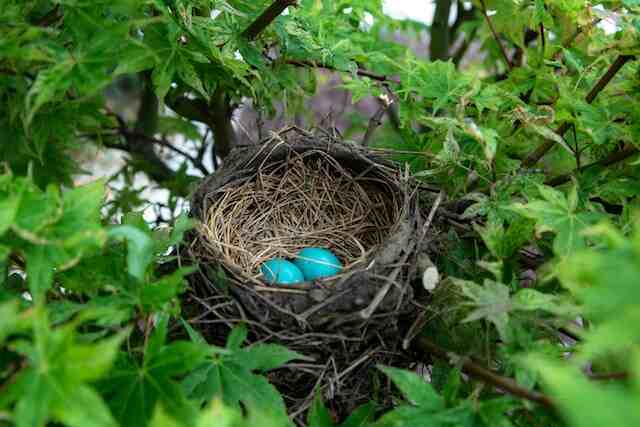
Blue Eggs and Their Unique Coloration
How Do Blue Eggs Get Their Color?
Blue eggs get their color through a pigment called oocyanin, which is deposited on the eggshell during formation. Oocyanin is synthesized in the shell gland and imparts a blue hue to the eggs.
The genetics of the chicken play a role in determining the presence of oocyanin, resulting in blue egg-laying breeds.
The unique coloration of blue eggs is a result of the specific pigment and its deposition process.
Explanation of Blue Eggshell Coloration
Blue eggs are a unique sight in the world of egg-laying chickens. Unlike brown or white eggs, blue eggs have a distinctive color that sets them apart.
The blue color of these eggs comes from the deposition of pigment on the surface of the shell.
This pigment is different from those found in other types of eggshells, and it gives blue eggs their characteristic hue.
The coloration of blue eggshells is due to a combination of genetic factors and pigmentation.
While most chicken breeds lay either white or brown eggs, there are some that produce this unique shade. The Araucana chicken, for example, is one breed that is known for laying blue eggs.
Contribution of Oocyanin Pigment to Blue Eggs
The pigment responsible for the unique coloration in blue eggshells is called oocyanin. This pigment belongs to a class called bile pigments and is present in high levels only in the shells of certain breeds.
Oocyanin differs from other classes of pigments because it has a copper atom at its center rather than iron.
This difference makes it more stable than other pigments and therefore less likely to degrade over time.
How Oocyanin Differs from Other Pigments
Oocyanin differs from other types of eggshell pigments primarily due to its chemical makeup.
Unlike biliverdin, which produces green colors, or protoporphyrin IX which produces reds or browns, oocyanin produces shades ranging from turquoise to light-blue hues.
This difference in color results from the way oocyanin reflects light differently than other pigments do since it has copper instead of iron at its core.
How Oocyanin is Synthesized and Deposited on the Shell
Understanding how oocyanin is synthesized and deposited on the shell will help to explain its contribution to the unique coloration of blue eggs.
After a hen lays an egg, it spends about 20 hours in the shell gland. During this time, pigments are deposited on the surface of the eggshell.
The gallbladder then secretes bile into the gut, which is used as a precursor for some of these pigments.
Oocyanin is synthesized in specific cells within this gland and subsequently transferred to the surface of the eggshell by specialized cells called tubular cells.
Once deposited, it remains stable for months or even years and contributes to the blue-green coloration observed in blue eggs.
Overall, understanding oocyanin’s contribution to blue eggs’ unique coloration enhances our appreciation for these beautiful marvels of nature.
The Genetics Behind Blue Egg-Laying Chickens
Blue egg-laying chickens have a unique genetic makeup that causes them to produce eggs with blue shells.
The genes responsible for this trait are located on the chicken’s chromosomes and are inherited from their parents.
Understanding the genetics behind blue egg-laying chickens is important for breeding purposes and for ensuring genetic diversity within the population.
How genetics influence eggshell color
The color of an eggshell is determined by the pigments that are deposited on it during formation.
These pigments are produced by specialized cells in the hen’s reproductive system, called shell gland cells, and are then transported to the shell membrane where they become incorporated into the forming eggshell.
The genes responsible for producing these pigments influence their amount, distribution, and type of pigmentation on each eggshell.
In blue eggs, a specific pigment called oocyanin is responsible for producing their distinct coloration.
Genes responsible for blue eggshell color
The gene responsible for oocyanin production in blue-egg laying chickens has been identified as a gene called SLCO1B3.
This gene encodes a transporter protein that moves oocyanin from the hen’s bloodstream into her shell gland cells, where it can be deposited onto developing eggs.
When a chicken inherits two copies of this gene (one from each parent), it produces high levels of oocyanin and lays deep-blue eggs.
Chickens that inherit only one copy of this gene have lower levels of oocyanin production and lay lighter-blue or greenish-blue eggs.
How genes are inherited from parent chickens
Inheritance patterns in chickens follow similar rules as in other animals or human beings, where there are two copies or alleles of every gene present in each animal (one inherited from each parent).
When breeding blue-egg laying chickens, it is important to consider the genetics of both parents to ensure that their offspring will also lay blue eggs.
If two chickens with two copies of the SLCO1B3 gene (purebred blue egg-laying chickens) are bred together, all of their offspring will inherit two copies of the gene and lay blue eggs.
However, if one parent has only one copy of the gene while the other has two copies, about half of their offspring will inherit one copy and produce lighter-colored eggs.
When breeding for specific traits such as egg color, genetic testing can help identify which chickens carry certain genes and determine which matings are most likely to result in offspring with desired characteristics.
The importance of genetic diversity
While breeding for specific traits such as egg color can be beneficial in terms of commercial production or novelty value, it is important to maintain genetic diversity within a population.
Genetic diversity helps ensure that a population can adapt to changing environmental conditions or resist outbreaks of diseases.
To maintain a diverse chicken population while still producing blue-egg-laying birds, breeders can introduce new genes into their flocks by periodically outcrossing with other breeds or strains that do not carry the SLCO1B3 gene.
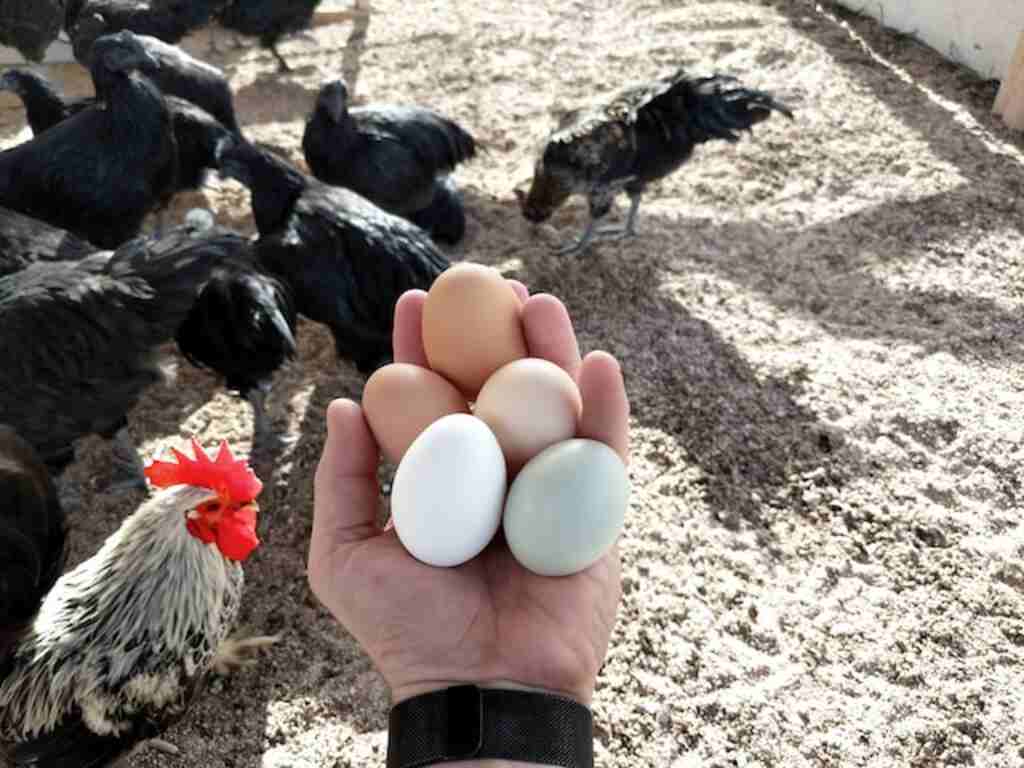
How to Breed Blue Egg-Laying Chickens
Breeding techniques to produce more blue eggs
Breeding blue egg-laying chickens can be a rewarding endeavor for those who wish to produce high-quality eggs with a unique color.
However, it is important to understand the genetics of eggshell coloration and how they affect breeding outcomes. The most effective way to breed blue egg-laying chickens is through selective breeding.
The first step in breeding blue egg-laying chickens is to identify the birds that carry the gene responsible for blue eggs. This can be done by observing the color of their plumage, feet, and earlobes.
Birds with white earlobes tend to lay white or light-colored eggs, while those with red or brown earlobes lay brown or dark-colored eggs. Chickens that lay blue eggs typically have blue or green earlobes.
Once you have identified the birds that carry the gene for blue eggshell coloration, you can begin selectively breeding them together to increase the likelihood of producing offspring with this trait.
It is important to note that not all offspring from these pairings will lay blue eggs, as genetics are complex and influenced by various factors.
One way to increase the chances of producing more blue egg-laying chickens is through linebreeding.
This involves breeding two closely related birds together in order to reinforce desirable traits in their offspring.
However, it is important not to overdo this technique as it can also increase the likelihood of undesirable genetic defects.
Another technique that may increase your chances of getting more blue-egg layers is crossbreeding.
This involves taking two different breeds of chicken and mating them together in order to combine desirable traits from each parent.
For example, if you have a purebred Ameraucana rooster (known for laying blue eggs) but want larger birds with better meat quality than Ameraucanas offer, you can cross the rooster with a larger breed like Rhode Island Red.
Conclusion
Breeding blue egg-laying chickens is a rewarding experience that requires patience, knowledge of genetics, and selective breeding techniques.
By understanding the science behind eggshell coloration and selectively breeding birds that carry the gene for blue eggs, it is possible to increase the likelihood of producing more blue-egg layers.
However, it is important to remember that genetics are complex and not all offspring will have the desired traits.
With dedication and persistence, breeders can produce high-quality eggs with unique coloration that stand out in any market or backyard coop.
FAQs: How Do Blue Eggs Get Their Color?
How are blue eggs different from white or brown eggs?
Blue eggs stand out with their unique hue, resulting from specific pigments deposited on the eggshell by certain chicken breeds.
Are blue eggs safe to eat?
Yes, blue eggs are safe to eat, just like any other eggs. The blue color is purely cosmetic and doesn’t affect their quality or taste.
What causes the blue color in blue eggs?
The blue color is primarily caused by a pigment called oocyanin, which is deposited on the eggshell during formation due to genetic traits in specific chicken breeds.
Can all chickens lay blue eggs?
No, not all chickens lay blue eggs. Blue eggs are predominantly laid by certain chicken breeds with the genetic ability to produce oocyanin.
Are blue eggs nutritionally different from other eggs?
No, the nutritional content of blue eggs is similar to that of white or brown eggs. The color difference doesn’t impact their nutritional value.
Can blue egg-laying chickens produce eggs of other colors?
Yes, blue egg-laying chickens can produce eggs of various colors. The breed’s genetics determine the color of eggs they can lay.
Do blue eggs have a different taste compared to white or brown eggs?
No, the taste of blue eggs is not different from that of other eggs. The flavor is determined by factors like the chicken’s diet and living conditions.
Are blue eggs more expensive than other eggs?
Blue eggs can be slightly more expensive due to the specific chicken breeds involved. However, pricing may vary depending on market factors and availability.
Can the blue color of the eggs fade over time?
No, the blue color of the eggs remains stable over time. It is inherent to the eggshell and doesn’t fade or change with age.
What can influence the intensity of blue color in blue eggs?
The intensity of the blue color in blue eggs can be influenced by factors such as the breed’s genetics, the chicken’s diet, and environmental conditions during eggshell formation.

